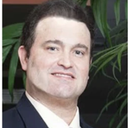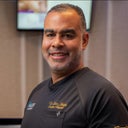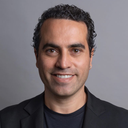A lovely DR mentioned I only had 3 pics so reposted w/more:) The end of my nose is very “squishy” and large and gets bigger when I smile. The top has a hump on it that is noticeable and extends out far from my nose. When I go from an angle, it makes my nose look crooked. I don’t want to change my nose drastically because i still want to look like me, but I want to make my nose appear smaller and get rid of the bump. Is this possible on my nose? I know the hump is fixable but the end?
Answers (14)
From board-certified doctors and trusted medical professionals
Answered on Jul 18, 2019
Answer
Dr. Vincent N. Zubowicz, MD

Dr. Vincent N. Zubowicz, MD
Board Certified Plastic Surgeon
Answer
Dr. Steven M. Denenberg, MD

Dr. Steven M. Denenberg, MD
Board Certified Facial Plastic Surgeon
Answer
Dr. Kenneth Hughes, MD

Dr. Kenneth Hughes, MD
Board Certified Plastic Surgeon
Answer
Dr. Suleyman Tas, MD, FEBOPRAS

Dr. Suleyman Tas, MD, FEBOPRAS
Plastic Surgeon
Answer
Dr. Zoran Potparic, MD

Dr. Zoran Potparic, MD
Board Certified Plastic Surgeon
Answer
Dr. Adam Bryce Weinfeld, MD

Dr. Adam Bryce Weinfeld, MD
Board Certified Plastic Surgeon
Answer
Dr. Thomas J. Walker, MD, FACS

Dr. Thomas J. Walker, MD, FACS
Board Certified Facial Plastic Surgeon
Answer
Dr. Richard G. Reish, MD, FACS

Dr. Richard G. Reish, MD, FACS
Board Certified Plastic Surgeon
Answer
More Rhinoplasty Questions
See all Rhinoplasty Q&AWE SEND PRETTY
EMAILS
What’s trending? Who’s turning heads? Which TikTok myths need busting? We’ve got you. No fluff, no gatekeeping—just real talk. Get our free, unfiltered newsletter.

